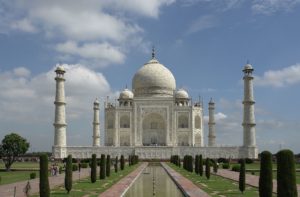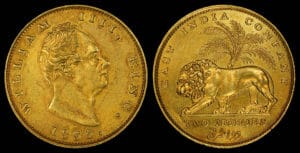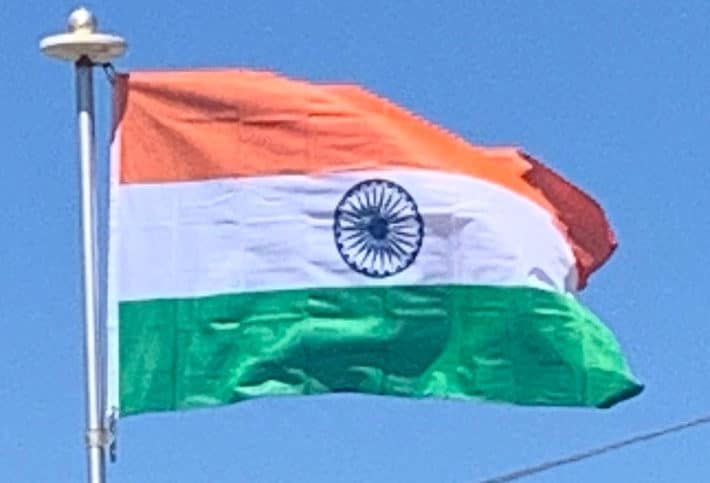
By the early 18th century, with the lines between commercial and political dominance being increasingly blurred, a number of European trading companies, including the English East India Company, had established coastal outposts. The East India Company’s control of the seas, greater resources, and more advanced military training and technology led it to increasingly flex its military muscle and caused it to become attractive to a portion of the Indian elite; these factors were crucial in allowing the company to gain control over the Bengal region by 1765 and sideline the other European companies. Its further access to the riches of Bengal and the subsequent increased strength and size of its army enabled it to annexe or subdue most of India by the 1820s. India was then no longer exporting manufactured goods as it long had, but was instead supplying the British Empire with raw materials. Many historians consider this to be the onset of India’s colonial period. By this time, with its economic power severely curtailed by the British parliament and having effectively been made an arm of British administration, the company began more consciously to enter non-economic arenas like education, social reform, and culture.
Modern India:
Historians consider India’s modern age to have begun sometime between 1848 and 1885. The appointment in 1848 of Lord Dalhousie as Governor General of the East India Company set the stage for changes essential to a modern state. These included the consolidation and demarcation of sovereignty, the surveillance of the population, and the education of citizens. Technological changes—among them, railways, canals, and the telegraph—were introduced not long after their introduction in Europe. However, disaffection with the company also grew during this time and set off the Indian Rebellion of 1857. Fed by diverse resentments and perceptions, including invasive British-style social reforms, harsh land taxes, and summary treatment of some rich landowners and princes, the rebellion rocked many regions of northern and central India and shook the foundations of Company rule. Although the rebellion was suppressed by 1858, it led to the dissolution of the East India Company and the direct administration of India by the British government. Proclaiming a unitary state and a gradual but limited British-style parliamentary system, the new rulers also protected princes and landed gentry as a feudal safeguard against future unrest. In the decades following, public life gradually emerged all over India, leading eventually to the founding of the Indian National Congress in 1885.

The rush of technology and the commercialization of agriculture in the second half of the 19th century was marked by economic setbacks and many small farmers became dependent on the whims of far-away markets. There was an increase in the number of large-scale famines, and, despite the risks of infrastructure development borne by Indian taxpayers, little industrial employment was generated for Indians. There were also salutary effects: commercial cropping, especially in the newly canalled Punjab, led to increased food production for internal consumption. The railway network provided critical famine relief, notably reduced the cost of moving goods, and helped nascent Indian-owned industry.
